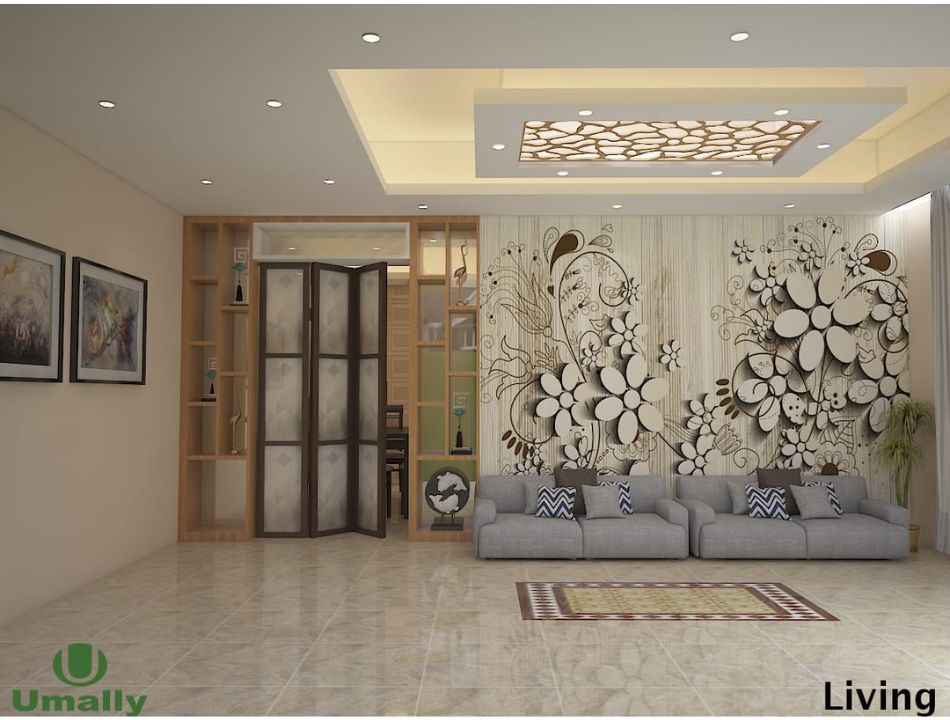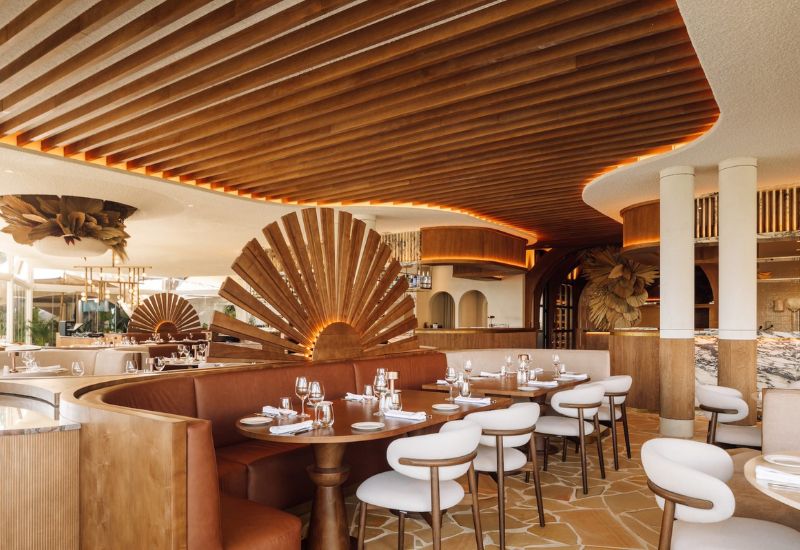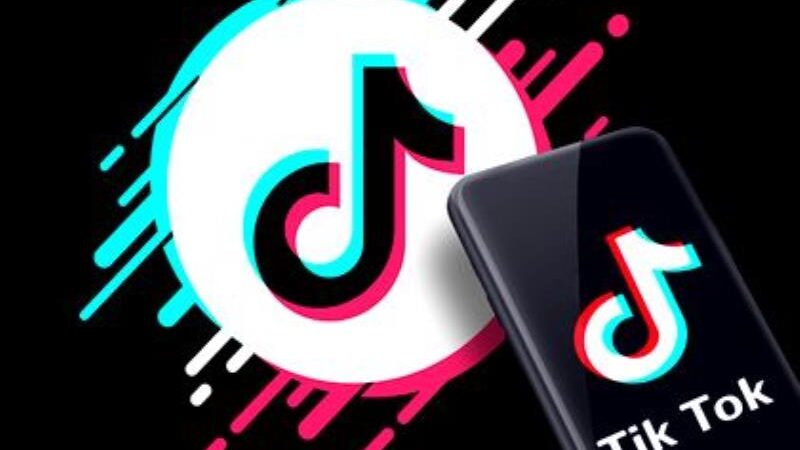Interior Design in Bangladesh: A Fusion of Tradition and Modernity

Introduction to Interior Design in Bangladesh:
When people think of interior design, countries like France, Italy, and Japan often come to mind. However, one country that is usually overlooked is Bangladesh. Nestled in South Asia, Bangladesh is home to a vibrant culture, reflected in its stunning interior design aesthetics. Bangladeshi interior design offers a unique and captivating blend of tradition and modernity, from traditional handcrafted furniture to intricate textiles and vibrant colors.
In recent years, interior design in Bangladesh has gained recognition globally for its innovative and sustainable approach. Designers in Bangladesh are known for their meticulous attention to detail and use of locally sourced materials to create breathtaking spaces that are both functional and visually appealing. Whether it’s a cozy living room adorned with intricate wooden carvings or a minimalist office space bathed in natural light, Bangladeshi interior design showcases the country’s rich heritage and creative spirit in a truly captivating way. Join us as we explore the beauty and charm of Bangladeshi interior design and uncover the secrets behind this hidden gem of the design world.
History and Influences of Bangladeshi Interior Design
Bangladesh, a South Asian country, is often overlooked when discussing interior design. However, the rich cultural history and influences of Bangladeshi interior design are a true marvel to discover.
Bangladeshi interior design has a centuries-old history, with influences from various civilizations that have left their mark on the country. From the Mughal Empire to British colonial rule, each era has brought its own unique style and aesthetic to the design landscape of Bangladesh.
One of the most prominent influences on interior design in Bangladesh comes from the Mughal Empire, which ruled over the region for centuries. The Mughals were known for their intricate architectural designs, often featuring ornate carvings, vibrant colors, and intricate patterns. These elements can still be seen in modern Bangladeshi interior design, with many homes and buildings featuring elaborate woodwork, colorful tapestries, and intricate tilework.
Another significant influence on Bangladeshi interior design comes from British colonial rule, which began in the 18th century. During this time, British architects and designers adopted a more minimalist and functional approach, which is evident in the clean lines and simple furniture often found in Bangladeshi homes today.
Beyond these historical influences, interior design in Bangladesh also draws inspiration from the country’s rich cultural heritage.
One critical aspect of interior design in Bangladesh is the use of natural wood, clay, and bamboo. These materials add warmth and coziness to spaces and reflect the country’s commitment to sustainability and eco-friendliness.
Color is another crucial element in Bangladeshi interior design. Many homes and buildings feature a vibrant and diverse color palette, from rich jewel tones to soft pastels.
In recent years, modern interior design in Bangladesh has also begun incorporating elements of contemporary design trends, such as minimalism and industrial chic. However, even as Bangladeshi interior design evolves and adapts to modern influences, it maintains a solid connection to its cultural roots.
Traditional Elements in Bangladeshi Homes
Traditions boasts a unique and eclectic interior design style. Bangladeshi homes are often characterized by a harmonious blend of traditional elements that reflect the country’s history and values.
One critical feature of interior design in Bangladesh is the use of vibrant colors. From bold reds and oranges to deep blues and greens, colors significantly define a home’s atmosphere. Bangladeshi homes often feature intricate patterns and designs in colorful tapestries or hand-painted murals on walls. These colorful accents add warmth and personality to the space, creating a welcoming and lively environment for residents and guests.
Another essential element of interior design in Bangladesh is the use of natural materials. From bamboo and jute to wood and clay, Bangladeshi homes often incorporate local materials that are both sustainable and aesthetically pleasing. Charm to the space and connect the house to its surroundings, creating a sense of harmony and balance with the environment.
Traditional furniture and decor also play a significant role in Bangladeshi homes. Handcrafted wooden furniture, intricately carved with ornate designs, is standard in Bangladeshi households. These pieces add a sense of elegance and sophistication to the space and reflect the craftsmanship and skill of local artisans. Additionally, traditional textiles such as embroidered cushions and handwoven rugs are often used to add texture and warmth to the home, creating a cozy and inviting atmosphere.
Family and cultural traditions are also deeply ingrained in interior design in Bangladesh. Many households display family heirlooms and artifacts passed down through generations, reminding the family of its history and cultural identity. Religious symbols and icons are also commonly found in Bangladeshi homes, reflecting the importance of spirituality and faith in residents’ everyday lives.
Incorporating Handcrafted Textiles and Artwork
Bangladesh is rich in textile traditions and craftsmanship, which is evident in its interior design. From intricately woven fabrics to embroidered tapestries, handcrafted textiles significantly enhance the beauty and warmth of Bangladeshi homes.
Another critical element of interior design in Bangladesh is the use of embroidered textiles. Whether it’s a delicately embroidered bedspread or a vibrant wall hanging, these pieces add a touch of artistry and whimsy to any space. Traditional embroidery techniques, such as hand-stitching, are also standard in many Bangladeshi homes, adding a personal touch to the décor.
In addition to textiles, artwork plays a significant role in interior design in Bangladesh. Paintings, sculptures, and pottery adorn walls and surfaces, adding color and personality to the space. Many artists in Bangladesh draw inspiration from the country’s rich cultural heritage, creating pieces that pay homage to traditional art forms such as Pattachitra paintings or clay pottery.
One of the most unique aspects of interior design in Bangladesh is the fusion of traditional techniques with contemporary elements. For example, a modern living room might feature a conventional handwoven rug, sleek furniture, and minimalist décor, creating a harmonious blend of old and new. This juxtaposition of styles adds visual interest and reflects the dynamic nature of Bangladeshi culture.
Incorporating handcrafted textiles and artwork into interior design in Bangladesh adds beauty to a space, helps support local artisans, and preserves traditional craft techniques. Homeowners can infuse their spaces with history and authenticity by choosing handcrafted pieces over mass-produced items, while also contributing to maintaining Bangladesh’s rich textile heritage.
In conclusion, interior design in Bangladesh is beautiful because it celebrates craftsmanship and tradition. Each element, from handwoven textiles to intricately embroidered artwork, is carefully chosen to create a visually stunning and culturally rich space. By incorporating these handcrafted pieces into their homes and living spaces, they support the local artisans who keep these age-old traditions alive.
Sustainable Practices in Bangladeshi Interior Design
Sustainability is a critical focus in interior design in Bangladesh, with designers incorporating various practices to ensure their designs are aesthetically pleasing and environmentally friendly. One of the most common sustainable practices is using locally sourced materials. By sourcing materials such as wood, bamboo, jute, and clay from local suppliers, designers reduce their carbon footprint by minimizing transportation emissions, supporting local artisans, and preserving traditional craftsmanship.
Another sustainable practice frequently used in interior design in Bangladesh is upcycling and repurposing. Instead of discarding old furniture or decor items, designers often creatively repurpose them into new ones to reduce waste and give the design depth and personality by adding a sense of history and nostalgia.
Water conservation is also a crucial aspect of sustainable interior design in Bangladesh. Water scarcity is a pressing issue in many areas of the country, so designers often incorporate water-saving fixtures and appliances. Rainwater harvesting systems, low-flow faucets, and greywater recycling are some ways designers strive to reduce water consumption and promote sustainable practices.
Energy efficiency is another critical consideration in interior design in Bangladesh. With rising energy costs and environmental concerns, designers often incorporate energy-efficient lighting solutions, such as LED bulbs and solar-powered lights, to reduce electricity consumption. Designers also focus on optimizing natural lighting.
Furthermore, many Bangladeshi interior designers are also embracing biophilic design principles. These principles focus on incorporating elements of nature into indoor spaces to improve well-being and connectivity to the natural world. Designers aim to bring the outdoors inside through indoor plants, natural materials, and green walls, creating healthier and more sustainable living environments.
Sustainable practices are at the heart of interior design in Bangladesh, guiding designers to create beautiful, functional, and environmentally and socially responsible spaces. By incorporating locally sourced materials, upcycling and repurposing, water and energy conservation measures, biophilic design principles, and social sustainability initiatives, Bangladeshi interior designers are leading the way toward a more sustainable and conscious approach to design.
Modern Trends and Innovations in Bangladeshi Interior Design
The arts scene has been making waves with traditional elements and modern trends. In recent years, Bangladeshi interior designers have incorporated innovative techniques and ideas to create stunning living spaces reflecting the country’s dynamic and diverse culture.
One key trend in interior design in Bangladesh is using sustainable materials, and designers opt for eco-friendly materials such as bamboo, jute, and recycled wood to create beautiful and functional spaces. The design helps reduce the space’s carbon footprint.
Another emerging trend in interior design in Bangladesh is integrating technology into living spaces. Temperature control: designers are finding creative ways to incorporate technology into their designs to create more efficient and convenient living environments. This blend of technology and traditional aesthetics creates unique and innovative interiors that cater to modern-day living.
Regarding aesthetics, Bangladeshi interior designers are known for their bold use of color and patterns. From vibrant red, orange, and yellow hues to intricate patterns and textures, designers are not afraid to experiment with colors and designs to create visually stunning spaces. This use of color and patterns adds a sense of energy and vibrancy to the interiors, making them feel truly alive and dynamic.
Furthermore, Bangladeshi designers also draw inspiration from their rich cultural heritage to create spaces that reflect the country’s traditions and history. Whether through handcrafted furniture, traditional textiles, or indigenous artwork, designers pay homage to Bangladesh’s cultural roots while infusing a modern twist to create timeless and contemporary spaces.
Overall, modern trends and innovations in interior design in Bangladesh push the boundaries of creativity and redefine how we think about living spaces. Focusing on sustainable practices, technology integration, colorful aesthetics, cultural influences, and minimalist design principles, Bangladeshi designers are creating interiors that are not only visually stunning but also socially and environmentally responsible. It’s truly inspiring to see how designers in Bangladesh embrace innovation and creativity to bring a unique and beautiful perspective to the world of interior design.
FAQs:
1. What is interior design?
Creating a harmonious balance between design elements such as colors, textures, furniture, lighting, and spatial arrangements.
2. Why is interior design important in Bangladesh?
Interior design is essential in Bangladesh for several reasons. It helps maximize the functionality of spaces, improves the quality of life for occupants, enhances the aesthetic appeal of buildings, and can even increase property value. In a country like Bangladesh, with a growing urban population and an increasing focus on modern living, interior design is crucial in creating comfortable and visually appealing spaces.
3. What are the critical elements of interior design?
The critical interior design elements include space planning, color scheme selection, furniture arrangement, lighting design, texture and pattern integration, accessorizing, and overall aesthetic cohesion. Each component contributes to creating a well-designed and balanced interior space.
4. How can I find a reputable interior designer in Bangladesh?
To find a reputable interior designer in Bangladesh, you can start by researching online directories, checking out design firms’ websites, asking friends or family who have used interior design services for recommendations, or attending design exhibitions and events where you can meet designers and view their portfolios.
5. An interior designer in Bangladesh?
When hiring an interior designer in Bangladesh, consider design style, understanding of local culture and climate, budget compatibility, and communication skills. It is essential to find a designer who brings it to life.
6. How much does interior design cost in Bangladesh?
The cost of interior design in Bangladesh varies with complexity, the designer’s or design firm’s reputation and experience, the materials and finishes used, and the scope of services required. They ensure you get a fair price for the desired quality and service.
7. Are there any specific design trends popular in Bangladesh?
Yes, like any other country, Bangladesh has unique design trends influenced by cultural, social, and economic factors. Some popular interior design trends in Bangladesh may include incorporating traditional elements with modern aesthetics, maximizing natural light, utilizing sustainable materials, and embracing minimalist or contemporary design styles.
In conclusion
Bangladeshi interior design showcases a unique blend of rich cultural heritage and contemporary aesthetics. From vibrant colors and intricate patterns to traditional craftsmanship and sustainable materials, every aspect of Bangladeshi interior design reflects the country’s diverse and storied history. By embracing and celebrating the beauty of Bangladeshi design, we bring a piece of this vibrant culture into our homes, support local artisans, and promote sustainable practices. So, next time you want to refresh your living space, consider infusing some Bangladeshi flair into your surroundings. Discover the beauty of Bangladeshi interior design and let your home be a reflection of a rich cultural heritage.




![5 Trends For Commercial Interior Design in Singapore [Updated 2024]](https://mirroreternally.com/wp-content/uploads/2024/05/Commercial-Interior-Design-in-Singapore-800x450.jpg)
![Top 10 Architecture Firms in Singapore [Updated 2024]](https://mirroreternally.com/wp-content/uploads/2024/05/Top-10-Architecture-Firms-in-Singapore-800x450.jpg)
